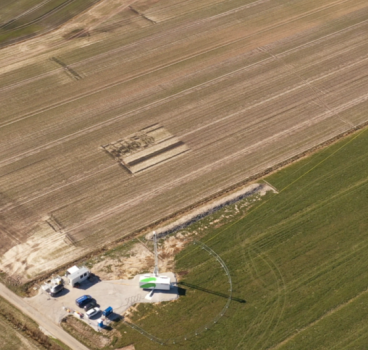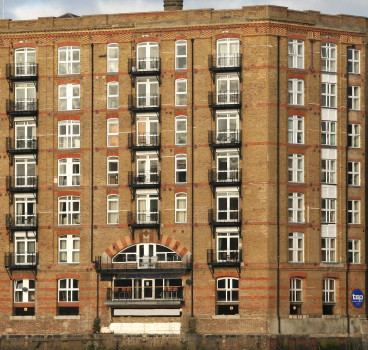Industrial doors – leading the way with growth and innovation
There is nothing boring about the industrial door market, a sector that continues to experience stable growth and innovation. As the global construction industry evolves and demands become more nuanced, several key trends are helping to shape its future such as smart technology, recycling and a distinct move towards helping to protect the environment – and this is just the beginning, writes John Ridgeway.
Industrial doors, often seen as purely functional elements in buildings, are playing an increasingly crucial role across the entire construction industry. From securing sensitive areas to enabling efficient operations and ensuring safety, these doors have come a long way, evolving not just in design but also in functionality and technology.
According to a 2023 report by Allied Market Research, the global industrial door market was valued at USD 36.61 billion in 2021 and is projected to reach USD 49.35 billion by 2027, growing at a CAGR (Compound Annual Growth Rate) of 5.1% during the forecast period.
This steady growth can be attributed to several factors, particularly rising urbanisation and industrial development. This has led to increased demand for industrial buildings, warehousing facilities, and logistics centres, all of which require various types of industrial doors.
Advancements in security features like biometric identification and automated locking mechanisms are driving demand for more secure industrial doors. Integration of automation, smart features, and self-healing materials are also enhancing the functionality and efficiency of industrial doors, making them more attractive investments, as we discuss later.
But most particularly, we can see that sustainable practices are gaining traction, leading to a rise in demand for energy-efficient doors with improved insulation and automated features. More and more manufacturers are also exploring the use of recycled materials in door construction, minimising waste and environmental impact.
Evaluating the environmental impact of doors throughout their life cycle, from material sourcing to manufacturing, operation and disposal, is becoming increasingly important. This has encouraged manufacturers to adopt more sustainable practices throughout the entire product life cycle.
As energy costs rise and environmental concerns grow, the demand for highly insulated doors and automated opening/closing systems is also expected to remain strong. This reduces energy consumption in buildings and contributes to lowering carbon footprints.
Smart Technology
Embedding sensors, actuators, and connectivity capabilities in doors is allowing for real-time monitoring, data collection, and remote control. This enables predictive maintenance, improved operational efficiency and enhanced security.
Connecting industrial doors to Building Management Systems (BMS), also makes for centralised control and the optimisation of functions, such as lighting, heating, and ventilation. This promotes resource efficiency and simplifies building management.
AI algorithms are being used to analyse data collected from sensors in doors, enabling predictive maintenance, anomaly detection, and automated decision-making. This can prevent breakdowns, can optimise operations and improve overall safety.
Material Innovations
Research and development into self-healing materials for doors continues to progress. These materials can automatically repair minor surface scratches or dents, potentially reducing maintenance costs and extending the lifespan of the door.
The quest for lighter weight, longer fire-resistant materials is also ongoing. This is crucial for meeting evolving safety standards and ensuring effective fire protection in various different settings.
We must also include nanotechnology, which offers exciting possibilities for developing doors with unique properties, such as self-cleaning surfaces, enhanced durability and improved insulation.
And as technology integration becomes more prevalent, cybersecurity becomes a critical consideration. Manufacturers are implementing robust security protocols to safeguard doors with smart features from unauthorised access and potential cyberattacks. Additionally, user access management systems are crucial to ensure only authorised personnel can control and operate doors remotely.
Market Segmentation
All these things are happening against a background of a diverse industrial door market which consists of sectional doors, consisting of horizontal panels that slide vertically when opening and closing. They are popular choices due to their space-saving design and insulation properties.
Roller doors, consisting of a continuous sheet of material that rolls up and down vertically within a housing unit are equally popular. They are particularly suitable for large openings and high-traffic areas. Similarly, folding doors, consisting of multiple panels hinged together that fold open and closed in an accordion-like manner, also have a large market share. They are often used for wide openings and require minimal space.
Then we see high-speed doors that open and close at high speeds, minimising heat loss or gain during operation. They are often used in warehouses, logistics centres, and food processing facilities. Other types, include swing doors, sliding doors, and fire doors, each with specific functionalities and applications.
Ongoing trends
The concept of a circular economy, where resources are reused and recycled, is gaining traction in the industrial door market. Manufacturers are exploring the use of recycled materials in door construction, minimising waste. Additionally, some companies are exploring the potential of bio-based materials like bamboo and hemp as alternatives to traditional materials like steel or wood. These sustainable options offer promising avenues for environmentally friendly door construction.
Evaluating the environmental impact of doors throughout their life cycle, from material sourcing to manufacturing, operation and disposal, is also becoming increasingly important. This encourages manufacturers to adopt more sustainable practices throughout the entire product life cycle.
As energy costs rise and environmental concerns grow, the demand for highly insulated doors and automated opening/closing systems is expected to remain strong. This reduces energy consumption in buildings and contributes to lowering carbon footprints.
Specialised doors
Furthermore, manufacturers are developing specialised doors for specific environments, such as blast-resistant doors, designed to withstand explosions, particularly in high-security facilities. Then we have cleanroom doors, with specialised features to prevent entry.
Add on the development of new fire-resistant materials with improved properties, such as lighter weight and longer fire resistance times, which is ongoing to meet evolving safety standards, together with advancements in transparent materials like advanced polymers and self-cleaning glass that are that making way for aesthetically pleasing and practical transparent industrial doors, allowing for better visibility and natural light transmission – then we can see that there is plenty happening in this market sector.
This is why the industrial door market is poised for continued growth, driven by increasing urbanisation, a growing focus on security and sustainability and technological advancements. As the industry evolves, manufacturers that embrace sustainable practices, integrate smart technology and offer innovative material solutions, are likely to thrive still further in this dynamic and ever-changing landscape.
Sources:
- Allied Market Research: https://www.alliedmarketresearch.com/doors-market-A06118
- Grand View Research: https://www.grandviewresearch.com/industry-analysis/doors-market-report
- Expert Market Research: https://www.grandviewresearch.com/industry-analysis/doors-market-report
Additional Blogs

Wind-power for cranes – a construction game changer?
Wind energy, a clean and renewable resource, is emerging as a game-changer for the construction industry – with innovations that continue to surprise. By harnessing the power of the wind,...
Read moreAre empty desks a construction opportunity?
The COVID-19 pandemic fundamentally altered the way we are employed. With millions transitioning to remote work, office buildings across the Western world stand eerily empty, sparking a critical...
Read more

How new regulations are reshaping the construction industry
The construction industry has long been known for its focus on cost. Traditionally, the lowest bidder has nearly always secured the project, leading to concerns about cutting corners and compromising...
Read more